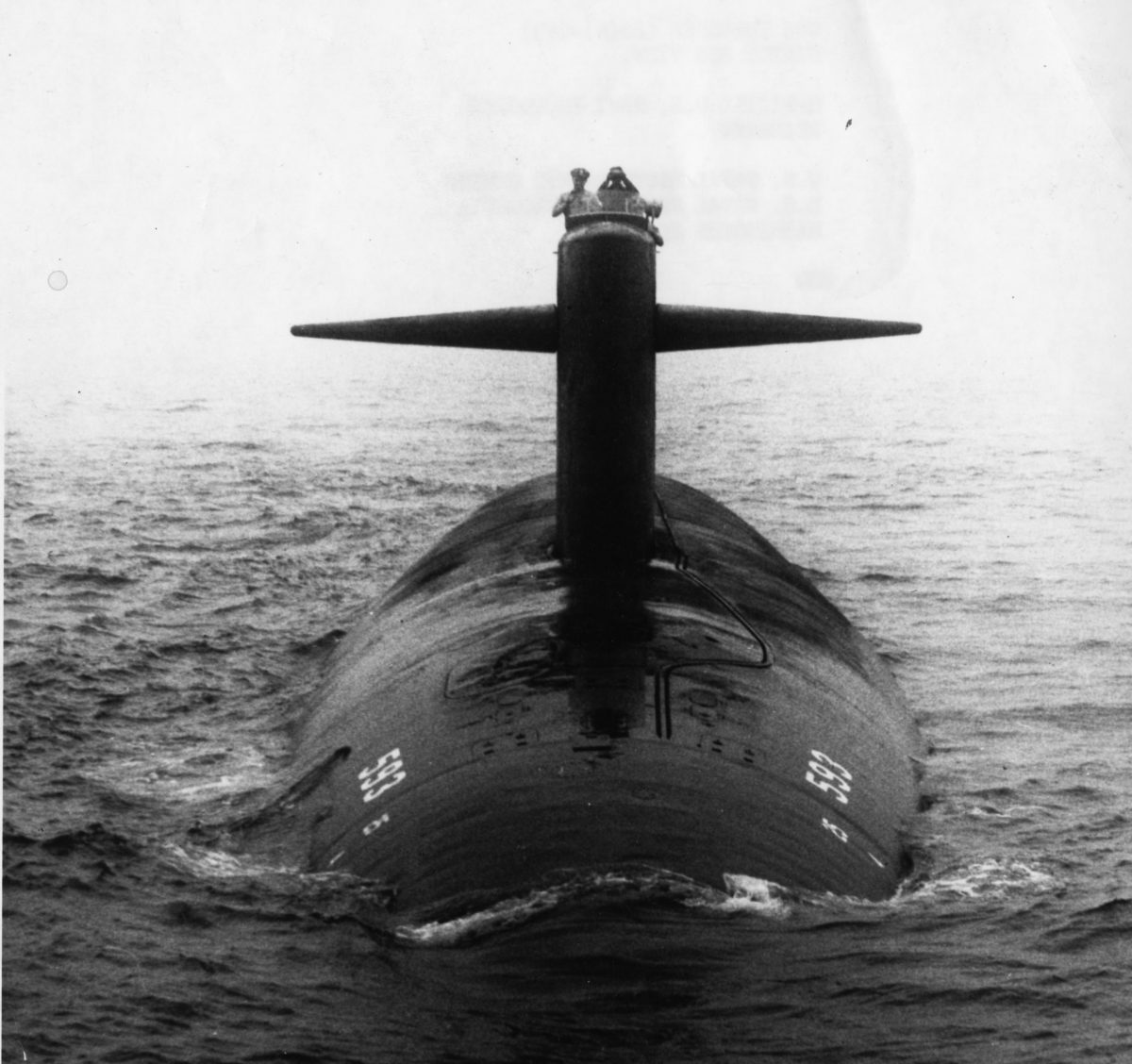The First Accident
In 1960, the USS Thresher was receiving finishing touches before it would be launched out of the Portsmouth Naval Shipyard on July 9th. As the latest model of submarine technology, the Thresher was over 30 feet wide and 278 feet long carrying SUBROC anti-submarine torpedoes it For the following few years, the Thresher conducted sea trials across the ocean to test the new weapons and technology of the Thresher.
On April 9th 1963, the USS Thresher launched from Kittery, Maine to conduct another series of drills. Just a few hours later, the Thresher was off of the coast of Cape Cod accompanied by the submarine rescue ship, the USS Skylark. The USS Skylark maintained communication throughout the first dive with everything going to plan. However, when the Thresher launched for its second dive, the Skylark received communication that the sub was experiencing “minor difficulties, have positive up-angle, attempting to blow.” Shortly after, communication with Skylark was completely cut off and it was the last the submarine would be heard. All 16 officers, 96 sailors and 17 civilians on board were killed in this accident. Two days after the accident on April 12th, John F. Kennedy declare flags to be flown at mast in commemoration of the lives lost.
The Investigation
The following months, the Navy investigated Contact Delta, a name given to the possible location of the Thresher based on echo sounding. With a camera in tow 1.5 miles above the ocean floor, a ship dangled an 8500-foot cord in an attempt to capture images of the wreckage. However, the findings from this investigation have been classified for nearly sixty years, leaving the families of the victims in the dark regarding what exactly happened on that April day.
However, a lawsuit under the Freedom of Information Act by a former commander of Thresher-class submarines, James Bryant, led to the release of the documents in August 2020 that reveal the details of the disaster. These details show that there had been a leak in the engine room seawater system which is the most likely cause of the disaster. When the Thresher was at its test depth, one of the brazen joints in the engine room had developed a leak and incoming water likely short-circuited the electrical equipment resulting in the reactor shutting down and propulsion to terminate. Any power from the emergency propulsion motor was not enough to power the submarine to the surface which resulted in the sinking of the Thresher.

While the joint in the engine room was likely the direct cause of the sinking sub, failure by the Navy in the submarine design, construction, and safety assurance all led up to the sinking sub and led to the resulting damage. The tragedy of the USS Thresher was a wake-up call for the Navy to re-examine their processes, especially in submarine technology, to prevent such a disaster from happening ever again.
For a continuation of the narrative see the USS Scorpion
